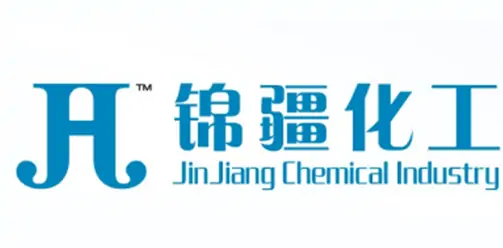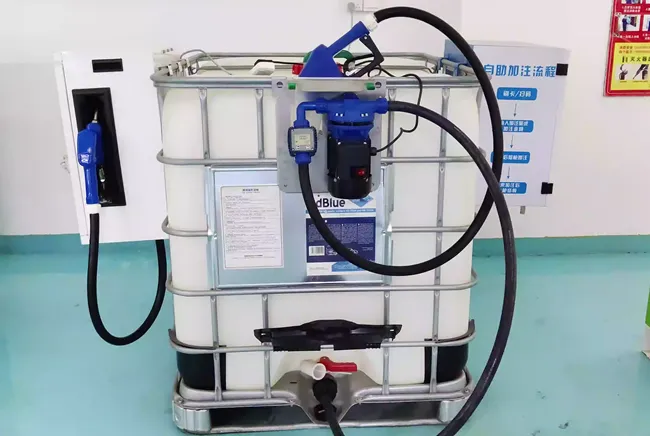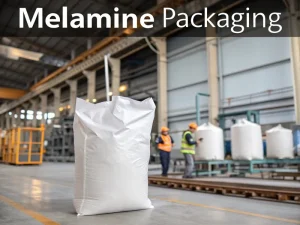
High Pressure Nelamine Use For Melamine Tableware Advantage
Tech Blog High Pressure melamine Use For Melamine Tableware Melamine tableware has become a staple for households, restaurants, and catering services worldwide due to its

Suppose you are driving a modern diesel car or have noticed one at a gas station. In that case, you may have noticed a filling port called “AdBlue” or “DEF”, which is usually located next to the fuel tank cap. This raises a common question: Why urea is used in vehicles? What exactly is it used for?
Firstly, it is essential to clarify that automotive urea is never a fuel additive and must not be added to the fuel tank! It is a liquid used to treat exhaust gases, with the core mission of making modern diesel vehicles more environmentally friendly.
In short, cars use urea to significantly reduce harmful air pollutants emitted by diesel engines, especially nitrogen oxides (NOx). This technology is called Selective Catalytic Reduction (SCR), and urea is an essential key component in this system.

Diesel engines are highly praised for their power and fuel efficiency. Still, they produce a significant air pollutant during combustion – nitrogen oxides (NOx).
Nitrogen oxides are the “culprits” that cause the following environmental and health problems:
In order to cope with increasingly strict global emission regulations, car manufacturers need an efficient technology to “purify” these harmful exhaust gases, and SCR technology has emerged.

The professional name of the car urea you purchased at the gas station is Diesel Exhaust Fluid (DEF). AdBlue ® is just a registered trademark of DEF; the two are essentially the same thing.
It is not the ordinary urea fertilizer you see in farmland, but a solution composed of a precise formula:
This 32.5% concentration is crucial because it is the lowest freezing point ratio of urea solution (about -11 °C) and can adapt to most climatic conditions. Unlike industrial urea (used for fertilizers), automotive urea must comply with ISO 22241/VDA standards and have almost zero impurities. Pollutants such as chlorides, metals, or biuret can clog injectors or damage catalysts.
The SCR system is like a miniature factory installed in the exhaust system of a car. Its working principle can be decomposed into the following simple steps:
Urea is a fuel additive.
DEF urea is stored separately from diesel and is only injected into the exhaust gas, never into the fuel.
Water can replace DEF urea.
Substitutes can damage SCR catalysts. Only certified DEF urea can ensure proper nitrogen oxide reduction.
DEF freezes and damages the engine.
DEF freezes at -11 ° C, but the vehicle has a heated fuel tank to prevent this issue. DEF is injected into the exhaust system, not the engine, so it never comes into contact with engine parts. When used correctly, high-quality DEF (compliant with ISO 22241) is non-corrosive to SCR systems.
Urea will reduce fuel efficiency.
The SCR system allows the engine to operate more optimally (e.g., higher power combustion temperatures, followed by neutralization of NO ₓ).
Only large trucks use urea.
Urea is used in all modern standard diesel vehicles, including sedans, trucks, buses, and heavy-duty trucks.
Urea is used as a key component of diesel exhaust fluid (DEF) in vehicles, enabling SCR systems to reduce harmful NOx emissions by up to 90%. Its efficiency, safety, and cost-effectiveness make it indispensable for meeting global environmental standards. This technology enables us to continue enjoying the mighty power and high efficiency brought by diesel engines, while minimizing their negative impact on air quality and human health. It is an essential core of modern clean diesel technology.
What would happen if my car runs out of AdBlue/DEF?
This is the most concerning issue for car owners. If your vehicle runs out of DEF, the in-car system will trigger a protection mechanism. The following situations usually occur:
Performance limitations: The vehicle will enter “imp mode”, and the engine power and vehicle speed will be severely restricted.
Unable to start: After you run out of DEF and turn off the engine, the vehicle will not be able to start again until you refill the DEF. This is to enforce environmental regulations and ensure that cars cannot operate without meeting emission standards.
Can I add AdBlue/DEF myself?
Indeed, adding DEF is as simple as adding water. You can purchase bottled or barreled DEF at gas stations, auto parts stores, or online and refuel according to the instructions in the vehicle manual.
How often should urea be replenished?
Usually every 5000-10000 kilometers, depending on driving conditions. Trucks consume approximately 5 liters of DEF for every 100 liters of diesel fuel.
Is automotive urea corrosive?
Yes. Urea solution is corrosive to certain metals such as carbon steel, aluminum, and copper. Therefore, if overflow occurs during refueling, it should be immediately rinsed with clean water to prevent damage to the car paint or vehicle components. This is also why the storage tanks and related elements of DEF are made of stainless steel or special plastic.
Is car urea the same as fertilizer urea?
No Automotive urea is ultra pure (99.9%), free of sulfides/chlorides. Industrial urea contains impurities that can damage the SCR system.

Tech Blog High Pressure melamine Use For Melamine Tableware Melamine tableware has become a staple for households, restaurants, and catering services worldwide due to its

Tech Blog Melamine packaging For manufacturers, inaccurate packaging not only fails to meet national standards but also increases labor costs and the risk of product

Tech Blog How to Detect Melamine in Textiles? Melamine powder, a nitrogen-containing heterocyclic compound, is widely used in flame-retardant textiles and plastic products due to

JINGJIANG MELAMINE POWDER
© JINJIANG MELAMINE